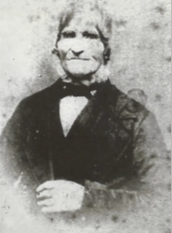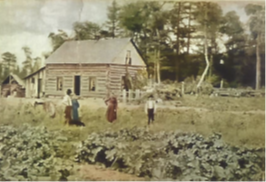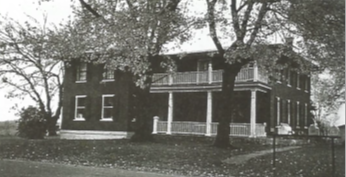
Abel Brink was Graafschap’s first banker.
At the age of 10, he emigrated from the Netherlands to the United States with his parents, Hendrik Abel and Lammegien Brink, and a brother in 1848. They came from Rotterdam aboard the three-masted sailing vessel Dione and arrived in New York on June 2.
They headed west via the Erie Canal, sailed around the lower peninsula of Michigan via the Great Lakes, and landed at the entrance of Black Lake, before boarding a flatboat that took them to the woods of Holland. As soon as he could, Hendrik bought 20 acres of land south of the hill called Graafschap, and commenced clearing land for a log cabin and a small field to grow food.
The trees on his property served multiple purposes: their wood provided material for tools and structures, their ashes when used for heating or cooking became fertilizer, a welcome substitute for manure.
Hendrik also used oxen to pull logs, enabling him to grow crops amongst the tree stumps. Later he replaced his oxen with horses; still, for every work horse, he had to set aside five acres of productive land for raising oats, grass, hay, and straw.
In his first decade of farming in America, it took Hendrik a day’s labor to cut half an acre of grass or grain by hand with a scythe. The amount of manpower available limited the amount of acreage he could cultivate.
In contrast to his father, Hendrik’s youngest son, Abel H. Brink, pursued commerce. It was an ability he developed because a severe disability precluded him from engaging in heavy farm work.
In 1860, at age 22, Abel married Lyda DeBoer and opened a General Store on 60th Street, Graafschap’s Main Street. Although two other community members tried and failed before Abel launched his business, Abel successfully operated his store for 14 years.

In 1861, his neighbors elected him Laketown Township Clerk and, in 1866, the U.S. government appointed him Graafschap’s postmaster. Abel established the Graafschap Post Office in his store. In 1867, he added Justice of the Peace to his portfolio. By 1870, his estate was worth over $10,000 (over $300,000 in today’s dollars).
In 1872, he built a large Veneklasen brick house on South Street (now 5984 Church Street) across from the Graafschap Christian Reformed Church to house his growing family (soon to number 12).
Like his father, Abel invested in real estate. In addition to helping his father expand his acreage, he himself invested in land to the southeast, towards Collendoorn (East Saugatuck). Here, good land was still available, but by 1872 the price had risen to $10 per acre, well above the $1.25-$1.50 per acre his father Hendrik had paid.
Subscribe: Get unlimited access to our local coverage
By this time, Abel was also buying shares in businesses and lending money to businessmen. Thus, his spacious home also served as a bank. It even served as an inn for travelers who needed short-term lodging.

Abel’s lending to businesses, for a short time, made him the owner of a furniture company in Holland. In December 1887, Reindert Werkman convinced Brink to lend him $11,000 for two years at 11% interest, collateralized by Werkman’s business assets, which included the Werkman Agricultural Works, a maker of fanning mills, milk cans, and other related items.
Then, Werkman Agricultural Works became the Werkman Manufacturing Company, a maker of furniture, such as bedroom suites. But when an anticipated loan from an insurance company didn’t materialize, causing Werkman’s empire to collapse, Brink became the owner of Werkman Manufacturing Company’s assets. In 1889, Brink sold those assets to a group of Holland investors, including “Black Jake” Van Putten, who then formed the Ottawa Furniture Company.
Hendrik Brink died in 1878. Abel Brink died in 1909.
Information for this story comes from William Sytsma’s “Row Crop Farming — The Brink’s Legacy — Golden Grain Farms” and Robert Swierenga’s “Holland, Michigan.”
— Steve VanderVeen is a resident of Holland. You may reach him at skvveen@gmail.com. His book, “The Holland Area’s First Entrepreneurs,” is available at Reader’s World.
This article originally appeared on The Holland Sentinel: Holland History: A severe disability led this Hollander to banking
Signup bonus from



